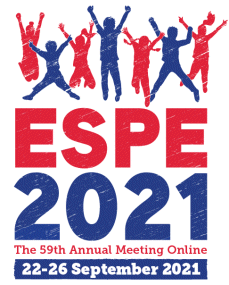
59th Annual ESPE (ESPE 2021 Online)
Online,
22 Sep 2021 - 26 Sep 2021

ePoster Category 1
Diabetes B
hrp0094p1-61 | Diabetes B | ESPE2021
Timing of Hypoglycaemia in Patients with Hyperinsulinism (HI): Extension of the Digital Phenotype
Worth Chris , Harper Simon , Salomon-Estebanez Maria , O’Shea Elaine , Nutter Paul , Dunne Mark J , Banerjee Indraneel ,
hrp0094p1-62 | Diabetes B | ESPE2021
Epidemiology of type 1 diabetes in children and adolescents: a 50-year, single center experience
Vuralli Dogus , Ozon Z. Alev , Gonc E. Nazli , Ardicli Didem , Jalilova Lala , Gulcek Omer Nazım , Alikasifoglu Ayfer ,
hrp0094p1-63 | Diabetes B | ESPE2021
Comparison of triglyceride and glucose index and homeostatic model assessment for insulin resistance in children and adolescents with type 2 diabetes mellitus
Seo Yoon Jong , Kim Eun Young , Yi Kyung Hee , Shim Young Suk , Hwang Il Tae ,
hrp0094p1-64 | Diabetes B | ESPE2021
Initial Neutrophil/Lymphocyte and Lymphocyte/Monocyte Ratios Can Predict Future Insulin Need in Newly Diagnosed Type 1 Diabetes Mellitus
Erbaş Ibrahim Mert , Hajikhanova Aygun , Besci Ozge , Acinikli Kubra Yuksek , Demir Korcan , Bober Ece , Abacı Ayhan ,
hrp0094p1-65 | Diabetes B | ESPE2021
Efficacy of Use of Continuous Glucose Monitoring System in patients with Congenital Hyperinsulinism
Tropeano Yesica , Purushothaman Preetha , Gilbert Clare , Morgan Kate , Doodson Louise , Dastamani Antonia ,
hrp0094p1-66 | Diabetes B | ESPE2021
Mortality in children with monogenic diabetes
Globa Eugenia , Zelinska Natalia , Franco Elisa De , Houghton Jayne , Johnson Matthew , Ellard Sian ,
hrp0094p1-67 | Diabetes B | ESPE2021
The Molecular Genetic Etiology by Whole Exome Sequence Analysis in Cases With Familial Type 1 Diabetes Mellitus without HLA Haplotype Predisposition or Incomplete Predisposition
Cem Yılmaz ğur , Evin Ferda , Onay Huseyin , Ozen Samim , Darcan Şukran , Gokşen Damla ,
hrp0094p1-68 | Diabetes B | ESPE2021
Birth weight and diazoxide unresponsiveness strongly predict the likelihood of congenital hyperinsulinism due to a mutation in ABCC8 or KCNJ11
Hewat Thomas , Yau Daphne , Jerome Joseph , Laver Thomas , Houghton Jayne , Shields Beverley , Flanagan Sarah , Patel Kashyap ,
hrp0094p1-69 | Diabetes B | ESPE2021
Oxidized lipid-associated protein damage in children and adolescents with type 1 diabetes mellitus: new diagnostic/prognostic clinical markers.
Kostopoulou Eirini , Kalaitzopoulou Electra , Papadea Polyxeni , Skipitari Marianna , Gil Andrea Paola Rojas , Spiliotis Bessie , Georgiou Christos ,
hrp0094p1-70 | Diabetes B | ESPE2021
Change in HbA1C predicts future abnormal Oral Glucose Tolerance Tests in children and adolescents with Cystic Fibrosis.
Aftab Sommayya , Ghauri Rooha Ijaz , Drew Samantha , Meek Hannah , Peters Catherine , Amin Rakesh ,



